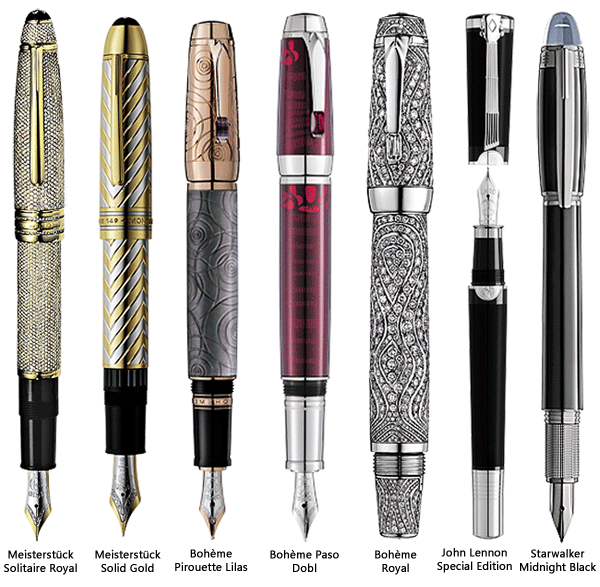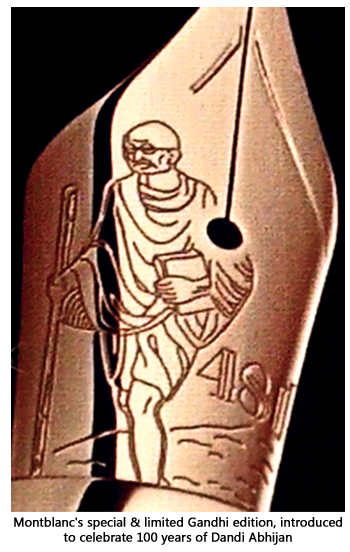- Prelude
- Editorial
- Subodh's 'return home'
- A Conversation with TV Santosh
- It's a War Out There
- Raqib Shaw
- Illusions in Red from a very British Indian Sculptor
- Stand Alone: Shibu Natesan
- Reading Atul Dodiya
- Bharti Kher: An Obsession for Bindis
- Bose Krishnamachari
- The Image - Spectacle and the Self
- From Self-depiction to Self-reference: Contemporary Indian Art
- GenNext: The Epitome of New Generation Art
- Kolkata's Contemporary Art A Look in the Mirror
- Innovation Coalesced with Continuing Chinese Qualities
- Kala Bhavana-Charukala Anushad Exchange Program
- Montblanc Fountain Pens
- Dutch Designs: The Queen Anne Style
- Bangalore Dance Beat
- Decade of change
- Distance Between Art & It's Connoisseur
- What Happened and What's Forthcoming
- 3rd India Art Summit
- New Paradigms of the Global Language of Art
- Black Brown & The Blue: Shuvaprasanna
- Art Events Kolkata
- Musings from Chennai
- Art Bengaluru
- Printmaker's Season
- Mumbai Art Sighting
- The Pause of Profound Stillness
- Previews
- In the News
- The Rebel Queen: An icon of her own times yet looked down upon
ART news & views
Montblanc Fountain Pens
Volume: 3 Issue No: 14 Month: 3 Year: 2011
by Anurima Sen

The name Montblanc was supposedly hit upon at a card game involving the industrialist Carl Schalk. When the question of an apt name for the new pen was raised by Claus-Johannes Voss, Mr. Schalk said, “Why not just call it Montblanc? After all, it's also black at the bottom, white at the top and the greatest among its peers."
Montblanc, originally known as the Simplo Filler Pen Company, was founded in the year 1908 by three men coming from three entirely different walks of life: a stationer from Hamburg, Claus-Johannes Voss, a banker from Hamburg, Alfred Nehemias and an engineer from Berlin, August Eberstein. In the following year they engineered a technically improved pen, which they named Montblanc. They were initially known as a manufacturer of fountain pens with built-in ink wells. The company began by producing expensive and exclusive pens in the Schanzen district of Hamburg, Germany. In 1910, a white tip was placed on the caps of these pens which evolved into a rounded star in 1913. This signature of a white six-point star on the crown of the pen represented the snow-covered peak of the highest European mountain, Montblanc, as a symbol of the brand's commitment to the highest quality possible.
By the 1920s, Montblanc started manufacturing their own nibs and produced lines such as the Rouge et Noir, Simplo and Diplomat. Rouge et Noir embraced the spirit of French fashion. It was made of hard, black rubber, had a red cap top and featured a sliding mechanism. The first pen to bear the name of Montblanc featured a screw mechanism, was slim and had a solid white cap top- it was produced alongside the Rouge et Noir. The Montblanc no. 4, produced subsequently, has now become a prized collector's item, especially because of the silver filigree work that takes the shape of a spider web. The Montblanc no. 0 also boasts of stunning silver and white-enamel work. Soon the company expanded its territory: Claus-Johannes Voss took responsibility of the Spanish Market and established an office in Barcelona, Alfred Nehemias started an office in Paris.
The first exclusive series to come out was the Meisterstück in the year 1924. Soon enough, the series obtained legendary status, just as its name predicted: Meisterstück being German for 'Masterpiece'. The Meisterstück 149 became the ultimate symbol for writing culture and style icon for perfect and timeless design aesthetics. The Meisterstück 149 can be recognized at first sight because of the narrow bands of sterling silver on its wide gold cap. It came with a lifetime guarantee and was the first pen to cost over twenty reichmarks. Some have often complained about the pen's heaviness, while others contend that the pen's weight makes it a pleasure to hold. Collectors prefer hunting down the vintage pre-1962 Meisterstück 149 despite a few complaints of ink-leakage. President John F Kennedy is known to have used a Meisterstück 149 in the year 1963 while he was visiting Germany. Its noteworthy role in the most significant signatures in politics, business and culture led to an enduring place in the Museum of Modern Art (MoMA), New York.
The safety pens that emerged from the Montblanc stable post the 1930s have also been deemed collectible. These safety pens mostly used two kinds of fillers: twist button fillers or piston fillers. A rare collectible from the 1930s would definitely be the Montblanc no. 128 PL. This pen is distinguished by the platinum lines on its body and it employs the twist filler mechanism.
Montblanc, along with Pelikan and Lamy, is one of the few survivors of the once large and diverse German fountain pen industry, which was laid to waste by World War II and the following years of economic depredation. Post Second World War (during which the company's factory in Germany was destroyed), Montblanc started manufacturing fountain pens for export purposes almost exclusively. One of the most recognized pens to emerge during this era was the Montblanc no. 244 which boasted a striped piston filler. In 1955 the company launched the “60 Line”- a line that was perhaps as admired as the Meisterstück was a few decades ago. In the 1960s, the Montblanc no. 342 was produced, followed shortly by the popular economy-version of the same pen called the Monte Rosa 042. By this time, the Montblanc pistons were working perfectly, and there were no complaints of leaking. Instead of being known merely as decorative pieces, they become popular for daily use during these years.
It would be fruitful to touch upon the issue of limited-edition pens while discussing such collectibles.  The production of such specially designed pens, accompanied by fancy eye grabbing packaging and documentation began soon after Parker launched its first limited editions such as Spanish Treasure 75 (1965), Queen Elizabeth (1977) and Charles and Diana (1981). In the year 1992 Montblanc followed suit, adopting themes such as writers, historical events or producing pens to commemorate important calendar events. Its special runs are restricted to 4810 copies- which is incidentally the height of the mountain, Montblanc. The author-theme pens of Montblanc include Agatha Christie (1993), Hemingway (1992), Oscar Wilde (1994), Voltaire (1995), Alexandre Dumas (1996) and Dostoyevsky (1997). These pens usually have silver trims, while a select few have gold trims. Crafted with characteristic intricacy and detail, each pen from this edition throws light on the writer's timeline, or the nature of his contribution to world literature. For example, the Cervantes Edition reflects an era of Spanish gallantry, with the pens sporting a body of brown marbled lacquer and culminating in the hand-made delicacy of the 18-karat gold nib. The Mark Twain Edition, on the other hand, reflects the American obsession with modern science and riverside-cultures, and is carved in deep-blue resin. The cap bezel embodies the spirit of the great American adventure, and resembles the steamboat chimneys of Mississippi. A striking specimen from this line is the Franz Kafka Signature edition, which embodies his famous work 'The Metamorphosis'. The Pen literally metamorphoses from its austere angular top to a circular, dark red barrel. The Writers Edition has been extremely popular, and signifies one of the most prestigious and eagerly sought-after limited series runs from the Montblanc design house- many of them are actually used to write with which is unusual for a collector's edition. Likewise, Montblanc's Donation Pens honour outstanding personalities in music, such as Leonard Bernstein and Johann Sebastian Bach.
The production of such specially designed pens, accompanied by fancy eye grabbing packaging and documentation began soon after Parker launched its first limited editions such as Spanish Treasure 75 (1965), Queen Elizabeth (1977) and Charles and Diana (1981). In the year 1992 Montblanc followed suit, adopting themes such as writers, historical events or producing pens to commemorate important calendar events. Its special runs are restricted to 4810 copies- which is incidentally the height of the mountain, Montblanc. The author-theme pens of Montblanc include Agatha Christie (1993), Hemingway (1992), Oscar Wilde (1994), Voltaire (1995), Alexandre Dumas (1996) and Dostoyevsky (1997). These pens usually have silver trims, while a select few have gold trims. Crafted with characteristic intricacy and detail, each pen from this edition throws light on the writer's timeline, or the nature of his contribution to world literature. For example, the Cervantes Edition reflects an era of Spanish gallantry, with the pens sporting a body of brown marbled lacquer and culminating in the hand-made delicacy of the 18-karat gold nib. The Mark Twain Edition, on the other hand, reflects the American obsession with modern science and riverside-cultures, and is carved in deep-blue resin. The cap bezel embodies the spirit of the great American adventure, and resembles the steamboat chimneys of Mississippi. A striking specimen from this line is the Franz Kafka Signature edition, which embodies his famous work 'The Metamorphosis'. The Pen literally metamorphoses from its austere angular top to a circular, dark red barrel. The Writers Edition has been extremely popular, and signifies one of the most prestigious and eagerly sought-after limited series runs from the Montblanc design house- many of them are actually used to write with which is unusual for a collector's edition. Likewise, Montblanc's Donation Pens honour outstanding personalities in music, such as Leonard Bernstein and Johann Sebastian Bach.
The People & History series, also called the Patron of Art series, is promoted by Montblanc as a vehicle for celebrating beauty, inspiring creativity and advancing culture. The range includes celebrated models such as Semiramis (1996), Prince Regent (1995), Lorenzo de Medici and Louis XIV. Not just legends, but entire epochs and historical legacies have also been celebrated by Montblanc through their special theme editions- the intricacy of the Qing dynasty, the kanji-inscribed Sakura blossoms, the beauty of Marlene Dietrich and Greta Garbo or the austere sincerity of Mahatma Gandhi. Montblanc seeks to represent world history as a composite kaleidoscope of these figures and by celebrating individual moments of world history as a showcase of artistry and engineering perfection, each of these pens reflect the quintessential spark of sophistication of its own editions. These pens pay perfect homage to the zeitgeist of an era long lost from memory, and the lavish packaging and documentation play no lesser part in their appeal. Montblanc now offers various lines of pens, ranging from high end to lower priced models. While the basic working principle of both these categories remains the same, the body styles are remarkably singular. The higher priced pens in general tend to be limited editions and soon become coveted collector's items. Compared to the 1990s, collectors these days have become more discerning regarding the limited editions introduced by pen makers. However, limited editions, such as the ones discussed above, are still regarded as one of the best investments in pen collecting.